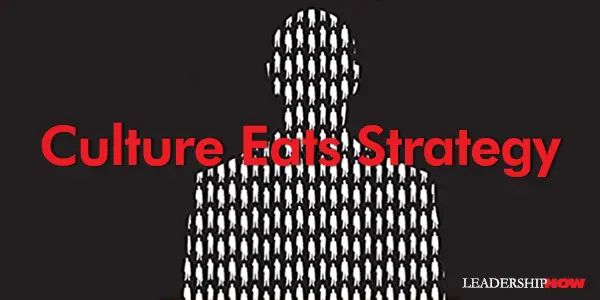 |
 |
05.28.09

Culture Eats Strategy
You’re so busy grasping technology in one hand and science in the other, you have no hand left to grasp what’s really important. It’s the human spirit, that’s the challenge, that’s the voice, that’s the expedition.TO create transformation change in an organization you need to change the culture. This may seem to go without saying, but we often try to make changes without changing the underlying belief systems. Belief systems drive behavior. In Transforming Your Leadership Culture, authors John McGuire and Gary Rhodes write, “Organizational culture holds your organization’s aspirations and the spirit of the place. Its beliefs and values define the organization’s core.” To illustrate how endemic the force of belief is within a culture, they relate the following example: Mike, a vice president at National Bank, a prestigious financial organization, tells the story of what came out of an all-day meeting of a group of vice presidents at headquarters: “We brought in VPs and directors from all our locations. We needed to use the largest conference room in the building and had to get special permission to do so.” “Change won’t take hold in operations without change in culture to back it up,” say McGuire and Rhodes. Understanding organizational culture, why it persists, how to change it, and where that change begins is the subject of their book. What beliefs are undermining your change efforts? 
Posted by Michael McKinney at 12:37 PM
|
BUILD YOUR KNOWLEDGE
 

How to Do Your Start-Up Right STRAIGHT TALK FOR START-UPS 
Grow Your Leadership Skills NEW AND UPCOMING LEADERSHIP BOOKS 
Leadership Minute BITE-SIZE CONCEPTS YOU CAN CHEW ON 
Classic Leadership Books BOOKS TO READ BEFORE YOU LEAD |